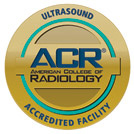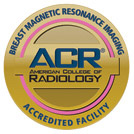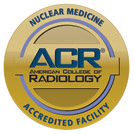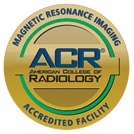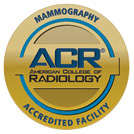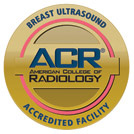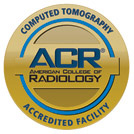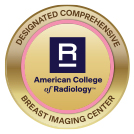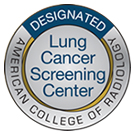Ultrasound-guided breast biopsy uses sonar-based imaging to detect a lump or abnormality within the breast tissue. Once identified, a tissue sample is examined with a microscope to reach a diagnosis. Unlike a surgical biopsy, an ultrasound-guided biopsy is minimally-invasive and less likely to leave a scar.
What Is an Ultrasound-Guided Breast Biopsy?
When mammography or physical examination detects the presence of a lump in the breast, additional testing is needed to determine if the finding is cancerous or benign.
During an ultrasound-guided breast biopsy, gel is placed on the patient’s skin to improve conductivity. A technologist presses a transducer against the skin to generate a series of inaudible, high-frequency soundwaves using ultrasound technology. Once the waves hit a mass, they return or echo back.
The transducer listens for the echo’s pitch, volume and frequency to find the lump and determine its size, shape and consistency, including if it’s a solid or fluid-filled growth. This information is translated into a moving picture or video loop displayed on a digital monitor.
Ultrasound technology helps determine the location of the mass or tissue within the breast. A biopsy needle is inserted through the skin toward the mass to take a tissue sample, also with ultrasound guidance.
Who Should Have an Ultrasound-Guided Breast Biopsy?
A doctor may recommend an ultrasound-guided breast biopsy if the patient has:
- A change in breast tissue structure
- A solid, abnormal-feeling mass
- Distortion of breast tissue structure
Based on the type of needle used, the following tissues may be extracted:
- Fine Needle Aspiration: Only fluid or cells are removed from the mass
- Core Needle Biopsy: A single sample is removed upon insertion
- Vacuum-Assisted Device: Multiple samples will be collected during a single insertion
- Wire Localization: A guide wire helps locate a lesion for surgical biopsy
Compared to surgical biopsy, an ultrasound-guided procedure:
- Can be performed in less time than a stereotactic breast biopsy
- Is less likely to scar the skin and has a faster recovery time
- Will not use ionizing radiation, making it safer for pregnant women
- Is a less-invasive approach to determine if a breast lump is benign or cancerous
- Can access hard-to-reach areas, including under the arm or close to the chest wall
- Is more cost-effective than surgical and stereotactic biopsy
Beyond these benefits, patients should be mindful that:
- Ultrasound-guided biopsy comes with a small risk of hematoma formation and infection.
- Mild discomfort after the procedure can be controlled with non-prescription pain relievers.
- Ultrasound-guided biopsy could miss a lesion or lead to an inconclusive diagnosis, due to size or clustering, requiring a surgical biopsy.
Preparation for an Ultrasound-Guided Breast Biopsy
Prior to the procedure, patients are advised to speak with their doctor about any recent illnesses or medical conditions and provide a list of all current medications and supplements.
Ultrasound-guided breast biopsy is conducted on an outpatient basis and, while significant preparation is not needed, someone should be available to drive the patient home in case they are sedated.
Patients who use aspirin, blood thinners and supplements that increase bleeding risk may be advised to discontinue these medications for at least five days before the biopsy.
On the day of the procedure, patients should arrive in comfortable, loose-fitting clothing and remove all jewelry. As the procedure begins:
- The patient will lie on an exam table and be asked to stay still during the procedure.
- To numb the breast, local anesthetic will be injected deep into the skin. Patients with denser breast tissue or an abnormality closer to the chest wall or behind the nipple may feel sensitivity.
- Gel will be placed on the skin and a transducer is used to find the mass.
- Once a mass is located, the radiologist will make a small nick on the skin for the biopsy needle to pass through.
- As the needle is inserted, the radiologist will observe the ultrasound site with the transducer, ensuring it travels to the mass.
- The tissue will be collected through fine needle aspiration, hollowed-out core needle or vacuum-assisted device.
- A small mark may be added to the biopsy site for future reference, especially if the patient will need to undergo surgical biopsy.
- Once the procedure is done, the needle will be removed and a dressing applied.
Patients are expected to avoid strenuous activity for at least 24 hours after the biopsy. If bruising or swelling occurs, over-the-counter pain relievers and cold packs can be used but these symptoms are normal. Contact a doctor if the swelling does not go down, bleeding or fluid drainage occurs, or a sense of heat is felt on the breast.
A pathologist will assess the sample to determine a diagnosis and review with a radiologist to ensure all findings are consistent. Even if cancer is not the diagnosis, a radiologist may recommend that the entire biopsy site and abnormality be removed. If the lump is not removed, additional imaging may be needed to determine if the abnormality has changed.
Has your doctor recommended an ultrasound-guided breast biopsy? Contact Midstate Radiology Associates to make an appointment.





